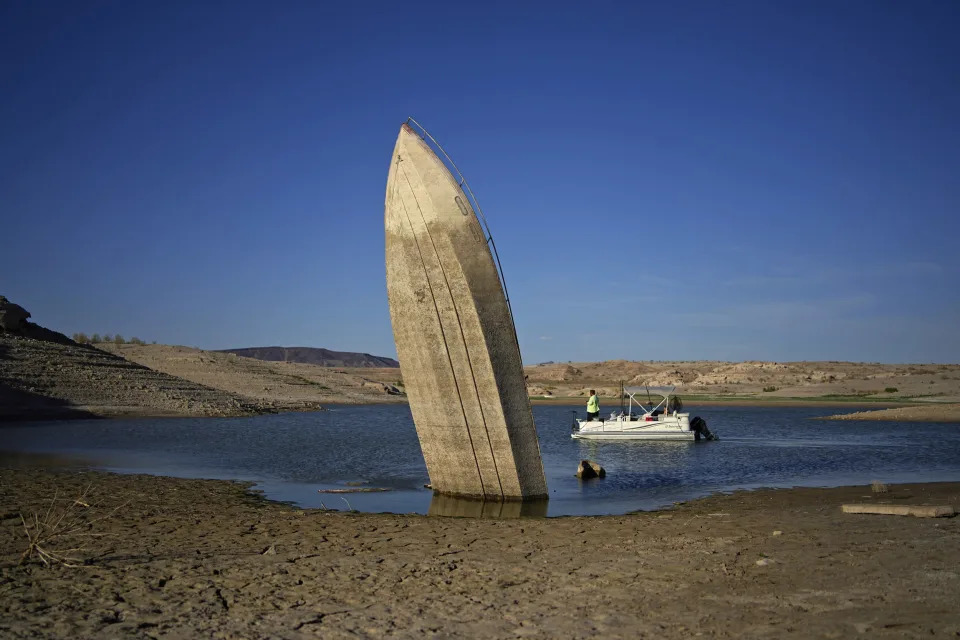Yahoo! Sports
Megan Rapinoe, sports world react to Supreme Court decision on abortion rights: ‘The cruelty is the point’
Henry Bushnell and Chris Cwik – June 24, 2022
Athletes and sports organizations reacted, mostly with horror, to the Supreme Court’s decision Friday to overturn Roe v. Wade and enable dozens of state laws that will criminalize abortions.
“This decision shows a branch of government that is so out of touch with the country and any sense of human dignity,” the WNBA players association said in a statement less than two hours after the Court officially ruled on Dobbs v. Jackson Women’s Health Organization.
Sue Bird tweeted that she was “gutted.” Her team, the Seattle Storm, said they were “furious and ready to fight.”
The WNBPA statement continued: “This ruling provides a treacherous pathway to abortion bans that reinforce economic, social and political inequalities and could lead to higher rates of maternal mortality while eviscerating rights to reproductive freedom for everybody.”
The NWSL players association also “strongly condemned” the decision — “a decision that effectively takes away a person’s right to make decisions about their own body, a basic human right at the core of every aspect of life,” the NWSLPA said in a statement later Friday afternoon.
Megan Rapinoe delivers emotional response, call to action
Individual soccer players also spoke out against the ruling while in camp with the U.S. women’s national team. On a previously-scheduled Zoom call with reporters Friday afternoon, midfielder Lindsey Horan said she was “still a little bit shocked,” and called it a “step backwards for our country.”
Forward Megan Rapinoe, who was not originally slated to meet with reporters, asked to speak in light of the Court’s ruling, and wiped away tears as she described a “disheartening,” “infuriating” and “scary day.”
In an unscripted opening statement that lasted more than nine minutes, she stressed that the decision will hit various groups of marginalized women most forcefully.
“We know that this will disproportionately affect poor women, Black women, Brown women, immigrants, women in abusive relationships, women who have been raped, women and girls who have been raped by family members — [or] who, you know what, maybe just didn’t make the best choice,” she said.
“And that’s no reason to be forced to have a pregnancy. It will completely exacerbate so many of the existing inequalities that we have in our country. It doesn’t keep not one single person safer. It doesn’t keep not one single child safer, certainly. And it does not keep one single — inclusive term — woman safer. We know that the lack of abortion [rights] does not stop people from having abortions, it stops people from having safe abortions.”
Rapinoe also responded emotionally to the concern — sparked by Justice Clarence Thomas’ concurring opinion in Friday’s ruling — that the Court could ultimately overturn Obergefell v. Hodges, which protects same-sex marriage, and other landmark rulings as well:
“I absolutely think gay rights are under attack, I absolutely think we will see legislation pop up state by state by state that will eventually come to this radical court. I have zero faith that my rights will be upheld by the court. I have faith in our country, and I have faith in people, and I have faith in the voters. And if you ever needed a f*cking motivation to vote, to get involved — quite literally, people’s lives depend on it. Actual lives. We’re talking life and death, and also your life in terms of, what does it mean to even be alive? If you can’t be your full self, what the f*ck is the point?”
She also explained why she doesn’t view the ruling as “pro-life,” pointing to other areas — such as healthcare — that will be affected by the Supreme Court’s decision.
“I just can’t understate how sad, and how cruel this is. I think the cruelty is the point. Because this is not pro-life by any means. This way of thinking, or political belief, is coupled with a complete lack of motivation around gun laws, it comes with pro-death penalty, it comes with anti-healthcare, anti-prenatal care, anti-childcare, anti-pre-K, anti-food assistance, anti-welfare, anti-education, anti-maternity leave, anti-paternity leave.
“This is not pro-life. And it’s very frustrating and disheartening, and frankly just infuriating to hear that be the reason that people are wanting to end abortion rights, and end this vital aspect of a woman’s — not only healthcare and general basic safety in this country, but her bodily autonomy, and the right to freedom, and the pursuit of happiness and liberty, is being assaulted in this instance. And it’s just incredibly disheartening.”
She concluded with a call to men who’ve “been silent” on abortion rights. “Stand up,” she said. “Say something.”
She pointed out that the decision was made by a majority-male court, and that the many systems and laws that discriminate against women in the U.S. were created by men.
“You are allowing a violent and consistent onslaught on the autonomy of women’s bodies, on women’s rights, on women’s minds, on our hearts, on our souls,” Rapinoe said when asked what her message to men, as a monolith, would be. “We live in a country that forever tries to chip away at what you have enabled, at what you have been privileged enough to feel your entire life.
“You also have the opportunity to do better every single day. You have the opportunity to show up, make your voices heard, whether that’s in the workplace, on a media zoom, in stadiums, in your family, the way that you vote. It is not a women’s issue. It is everyone’s issue.”
Other prominent athletes speak out on Supreme Court overturning Roe v. Wade
Several athletes past and present referenced the timing of the decision, one day after the 50th anniversary of Title IX, the watershed law that helped spark a decades-long women’s sports boom. “Yesterday we celebrated Title IX,” Orlando Magic guard Devin Cannady tweeted. “Today we tell these same women that they don’t have the freedom to make decisions about their own body.
“I’m sick for you, I stand with you,” Cannady wrote. “This country needs to be better, this sh*t is so backwards.”
Several teams and leagues responded with incisive statements, including the NBA and WNBA, which vowed to ensure access to reproductive health care for their employees.
“The NBA and WNBA believe that women should be able to make their own decisions concerning their health care and future, and we believe that freedom must be protected,” the joint statement reads. “We will continue to advocate for gender and health equity, including ensuring our employees have access to reproductive health care regardless of their location.”
In the NWSL, the Kansas City Current said they were “heartbroken.” The OL Reign said they “fiercely oppose the decision.” Gotham FC said it “vehemently objects to any rollback of Roe v. Wade and believes reproductive rights are human rights.”
The NWSL released its own statement, saying the ruling denies individuals “liberty and equality.”
“The Supreme Court’s ruling today denies individuals in this country the full liberty and equality that is the cornerstone of a just society. Reproductive rights are human rights. Until every individual has the same freedoms as their neighbor, our work is not done. We will continue to make our voices heard. The NWSL is more than just a soccer league; we are a collective who will stand up every day for what is right.”
While most strong statements came from women’s leagues and teams, the Seattle Sounders of MLS said they “believe in the right to autonomy over our bodies, and the right to choose.” Their goalkeeper, Stefan Frei, tweeted that “our country is actively moving in the wrong direction.”
Orlando City, in a joint statement with the NWSL’s Orlando Pride, said that this autonomy, and access to safe reproductive healthcare, were “basic, nonnegotiable human rights, and our club deeply objects to today’s Supreme Court decision.”
“Today’s reversal of Roe v. Wade is one that will not only put many at risk, disproportionately those in BIPOC and underserved communities, but is one that opens the door for future discrimination and civil rights violations of other marginalized groups,” the two Orlando clubs continued.
“Defending human rights is a battle that we will continue to fight, both for those impacted today, and for those who may be targeted in the future.”



 Scroll back up to restore default view.
Scroll back up to restore default view.












